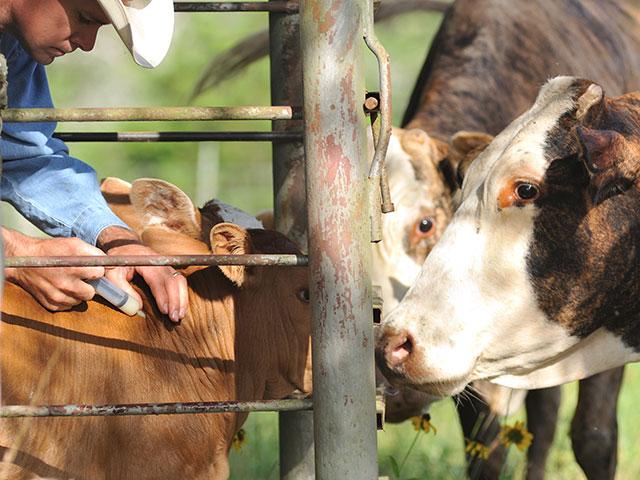Cull Quality Issues
Avoid Injection-Site Lesions With Best Management Practices
The cull cow market has been strong this year, with an outlook for continued demand but fewer animals in the slaughter mix. This year, USDA reported third-quarter U.S. cow slaughter at 13% above the five-year average. This all bodes well for prices. CattleFax market analyst Troy Applehans reported recently they are forecasting a high for the utility cow segment of the market at $115 per hundredweight (cwt) come spring.
With that in mind, avoiding discounts due to site lesions will be well worth the effort. Lesions can form at the site of an injection and are often the result of the body's immune system reacting to the injection. These knots can occur with both subcutaneous (SQ) and intramuscular (IM) injections.
When an injection is given intramuscularly, knots can be created, becoming injection-site lesions and a major beef quality issue. USDA inspectors may label cattle coming in with knots "USDA Suspect," meaning they will be retained and checked by inspectors for possible residue before clearing the animal for human consumption. Packers trim injection-site lesions from the carcass, often at a loss of muscle tissue. In 2018, it was estimated that injection-site lesions and abscesses cost the U.S. beef industry more than $4 million each year.
There are three types of lesions that can form due to injections: an active fluid-filled lesion, a woody callous lesion, and mere discoloration. Regardless of the lesion type, all pose quality issues and should be prevented.
P[L1] D[0x0] M[300x250] OOP[F] ADUNIT[] T[]
BEEF QUALITY ASSURANCE GUIDELINES
Follow Beef Quality Assurance (BQA) protocol to minimize issues from injection-site lesions.
Start by following the product label, and wherever possible, use SQ injections if permitted. Administer by tenting the skin, sliding the needle into the base of the tent. Give injections in the neck, so that any lump can be trimmed during processing without reducing carcass value.
If an IM injection is required, administer the vaccine or medication deep into the muscle of the neck, not the hindquarters. Always restrain an animal prior to giving an injection to help prevent broken needles and/or needle movement. If administering more than one injection, make sure sites are at least 4 inches apart. This allows for better absorption and less interaction between products.
IM injections should be limited to no more than 10 cc per injection site.
Change needles frequently, at least every 10 to 15 injections. Never straighten a needle, and use the proper gauge and length.
Through BQA training, lesions have dropped significantly over the years. Just moving injection-site areas to the neck stops damage to expensive steak cuts and makes it easier for packers to identify lesions at the plant.
The 2016 National Beef Quality Audit-Market Cow and Bull Results revealed that only 0.9%, 0.3%, 0.3% and 0.1% of all cattle had a knot in the neck, shoulder, top butt and round (respectively) -- all lesser frequencies than reported in previous audits.
For more information:
Beef Quality Assurance National Manual, or reach out to your state BQA officer: https://www.bqa.org/…
National Beef Quality Audit 2016: https://www.bqa.org/…
(c) Copyright 2022 DTN, LLC. All rights reserved.






